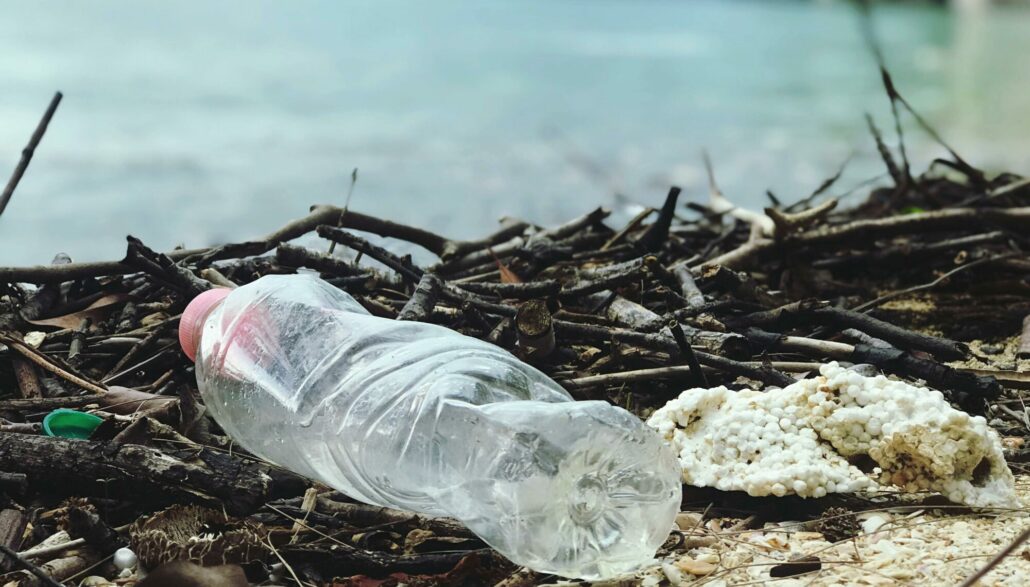By: Melinda Weaver, WMEAC Policy Intern
While bottled water methods have been around since the mid-1800’s, the cheap, commercialized plastic bottles that we know today were popularized in the 1970’s. Since then, they’ve become one of the most common products in the world. They function as inexpensive, convenient vessels for us to have access to fresh drinking water. As time has gone on however, questions have arisen about the safety of bottled water. This, coupled with the growing concern over the planet, has driven both scientists and climate activists to point out the discrepancies that come with the use of plastic bottles. The scale of the issue turns out to be quite extraordinary, with oceans filling up with so much plastic that some scientists claim there will be more plastic than fish in the ocean by 2050.
Recently, another issue with bottled water was discovered; according to the National Institute of Health, there are about 240,000 pieces of microplastics in a liter of bottled water. According to the Container Recycling Institute, about 60 million plastic bottles of water end up in landfills and incinerators each day, equating to around 22 billion bottles per year. In landfills, these bottles can take up to 450 years to decompose. Incineration may sound like a better alternative, however, burning plastic releases harmful chemicals, some of which have been known to cause cancer.
While many people are aware of the consequences of single-use plastic, bottled water is still arguably one of the most convenient methods of obtaining drinking water. Furthermore, many people drink bottled water because they believe that their tap water quality may not be as healthy as the water they consume from plastic bottled water. So, is there really a good solution?
Some people reuse plastic water bottles to reduce their plastic usage, which is a good idea, in theory. Unfortunately, our typical plastic water bottles are made from polyethylene terephthalate (PET or PETE, which is just a term for a kind of plastic). PET is BPA (Bisphinol A) free; however, it is still associated with health risks such as stunted growth, reproduction issues, and low energy levels. An individual is exposed to more and more PET the more they use the same bottle. Some studies also indicate that repeated use of one plastic bottle may leach probable human carcinogens, if the bottle is in less than perfect condition.
Along with chemical exposure, the ingestion of microplastics increases with each time a bottle is reused. Just like regular plastic in landfills and in the ocean, microplastics inside our bodies do not break down quickly or easily, and will accumulate in our bodies as time goes on. According to the World Health Organization (WHO), microplastics are smaller than 1.5 micrometers. These microplastics are small enough to travel through our intestinal walls and reach various body tissues, such as the liver and lymph nodes. These microplastics also contain compounds such as plasticisers, stabilizers, and pigments, which can be released into the bloodstream via microplastics in our systems. The long-term effects of microplastics are still emerging as research progresses, but some recent studies done by the National Institutes of Health suggest that some long-term effects of microplastic exposure include oxidative stress, neurotoxicity, reproductive toxicity, altered metabolism, and carcinogenicity.
All of this sounds very negative, and the emerging research is not comforting. Is there an alternative to the single-use plastic bottles that we’re all so used to? A good suggestion is purchasing a water filter pitcher for your tap water. This will filter out any unwanted sediments or contaminants that may be in your tap water, and also improve the taste of the water. While up front, the purchase is likely more expensive than a bottle of water, it’s a one-time purchase, so you will save money in the long term. Most of them don’t exceed twenty-five to fifty dollars on average. Some brand suggestions are ZeroWater Pitcher, Brita, Aarke Water Purifier, Seychelle PH20, and the Waterdrop 10-Cup. Having these in your house or place of work provides a more sustainable, cheaper, and ultimately healthier alternative to bottled water. Pairing this with a reusable metal or glass water bottle will minimize plastic use and limit your exposure to both microplastics and chemicals that are typically found in bottled water.
Eliminating single-use plastic from our daily lives is nearly impossible, and we should not feel guilty about having to use these convenient products. However, small changes can help us limit our waste and minimize any long-term negative health impacts that accompany single-use plastic. These simple switches will help both ourselves and the planet.

